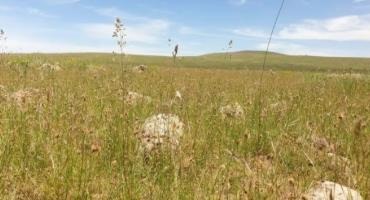Rangelands of Morocco are vital for the country’s wildlife and people. It protects the land from flooding and soil erosion, as well as replenishing underground water supplies. Sadly, Morocco’s territory suffers from progressive desertification. In some areas, this process is sped up by encroachment of rangelands for crop production and overgrazing, which deprive the land of its natural vegetation cover.
However, livestock plays a vital role in the country’s society and economy and is the main source of income to pastoralists for millions of people in Morocco, and is of particular importance in the High Atlas, where around 26% of rural households depends on livestock production. Maintaining the right balance between environmental and socioeconomic aspects therefore requires wise management.
Fortunately, pastoralists’ centuries-old traditional ecological knowledge showcased that striking this balance is possible. The Agdal system is a communal governance system by which pastoralists managed communal land and regulated the grazing of livestock, under specific norms and rules. In years gone by, setting up Agdals ensured that resources were not exhausted, and that the area’s wild plant and animal communities remained intact.

Agdals have shaped the cultural landscape of the High Atlas Mountains through the centuries. They encompass specific areas, resources and access rules formulated by local communities to manage their territory. The Agdal system mainly relies on grazing rotation and the timing of opening and closing dates in the pasture. Grazing is prohibited during spring to allow the vegetation cover to complete its reproductive cycle, including the flowering, pollination, and seed production. These regulations help the whole landscape to come back to life every spring, replenishing the plants along with the animals that feed on them.
In recent years, however, there has been a major shift from nomadism to sedentarization in Morocco. In the past, pastoralists used to move between mountains and valleys, heading uphill in the spring and summer to feed their livestock on the mountain sides, and settling down in the valley in winter. Nowadays, many communities are staying put, building permanent homes, and developing agricultural lands. This change in land use has a negative effect on the natural resources of the area.

In order to address this, BirdLife (through its role as Regional Implementation Team for the Mediterranean Hotspot of the Critical Ecosystem Partnership Fund (CEPF)) supported two organizations, the Biotope foundation and AFMI (Association Foret Modèle Ifrane), to revive traditional practices and conserve the cultural landscapes of Morocco.
Providing sustainable rangelands management choices at Ifrane National Park
Overgrazing has placed a heavy burden on the natural landscapes of Ifrane National Park, Morocco. One of the biggest problems is that pastoralists would often take their sheep to cedar forests for grazing, causing a rapid decline in the number of trees. AFMI organization believed that the solution to overcome these issues, and avoid further degradation, lay in the traditional practices of the past.

Agdals had long been abandoned in Ifrane National Park, and tribal conflicts, mainly over water resources, complicated the situation even more. Urgent action was needed to bridge the gap between local communities and governmental institutions. And so AFMI, through CEPF grant, worked hand in hand with the Ministry of Agriculture, Fisheries, Rural Development, Water and Forests and the local communities within the national park. They agreed to revive theAgdal system over 67 hectares of communal pastoral lands.
The area was closed against grazing for six months, with rangers assigned to keep an eye on it. During this time, AFMI planted native vegetation in three priority sites in a bid to restore endangered plant species. It was finally decided that September would be the set grazing period, instead of spring. This would ensure that native plants had time to grow and mature and allow livestock to disperse seeds as they moved around the area. To secure the ongoing success of the grazing management process, AFMI also provided pastoralist with water resources in five sites around Ifrane National Park.
Agdals can only be sustained in the long term if they have the agreement and participation of local people. To help with this, AFMI held a number of different conversations with local communities and tribes over six months to highlight the benefits of Agdals for livestock and biodiversity. After witnessing the growth of plants and the enrichment of wildlife such as insects and small animals, local tribes pledged in favour of adopting the Agdal system and protecting it from violations.
Click here to see more...